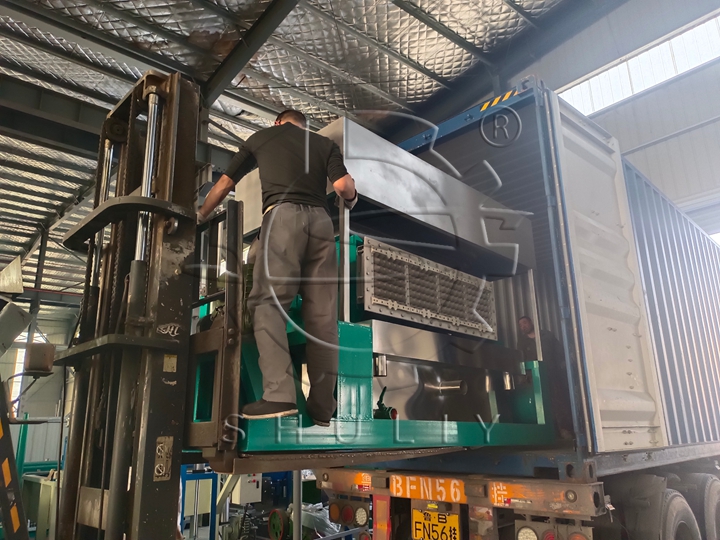How to dry egg trays with an egg tray drying room?
The egg tray drying room, also called a brick-built drying chamber, is used to fully dry the wet-molded egg trays. It helps prevent deformation, cracking, and mold growth, and offers an efficient, stable, year-round drying solution for medium and large-sized egg tray production lines.
This article will explain how the drying room works, the step-by-step drying process, and why it has become the preferred drying method for many pulp-molding factories.
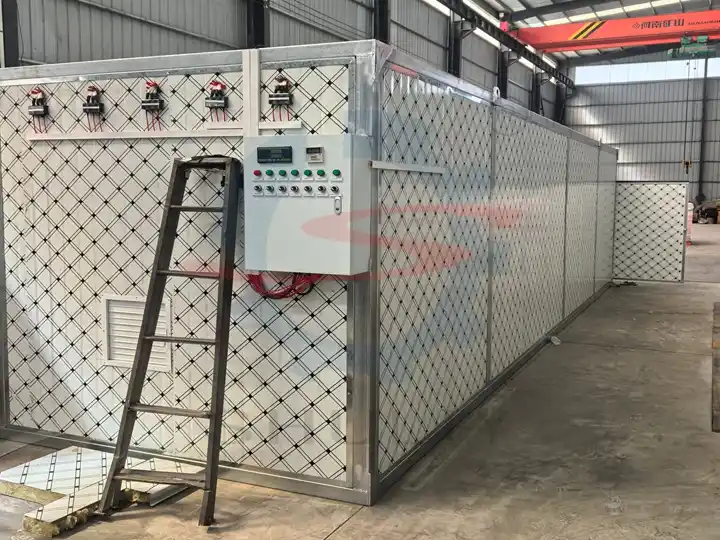
What Is an Egg Tray Drying Room?
An egg tray drying room is an enclosed, insulated drying chamber that uses continuous hot-air circulation to remove moisture from wet egg trays. Compared to natural sun drying, it offers higher efficiency, stable quality, and full-weather operation.
The structure mainly includes a material chamber and a heating chamber. Key equipment includes the heat source, ventilation, moisture-exhaust system, and temperature-humidity control system. The main features are double-sided hot-air supply, more even drying, a well-designed internal layout, a strong airflow system, and flexible temperature and humidity control.
Material Chamber: The trays are placed on racks or pallets. A steel air-insulation plate separates the material chamber from the heating chamber.
Heating Chamber: This chamber houses the heating equipment and generates hot air. A blower sends the hot air into the material chamber during operation.
Hot-Air Circulation: Circulation fans push hot air into the air ducts. The air then enters the material chamber through small holes in the tray racks. This left-and-right air-supply design ensures even drying.
Heating Options: Natural gas, coal, biomass pellets, electric heating, or air-energy heating can be used as heat sources.
Ventilation & Moisture-Exhaust System: It keeps the air circulating between the heating and material chambers and ensures proper air exchange to meet drying requirements.
Temperature & Humidity Control System: This system monitors and adjusts the drying conditions through sensors, controllers, and actuators. It regulates the heating equipment to achieve automatic drying control.
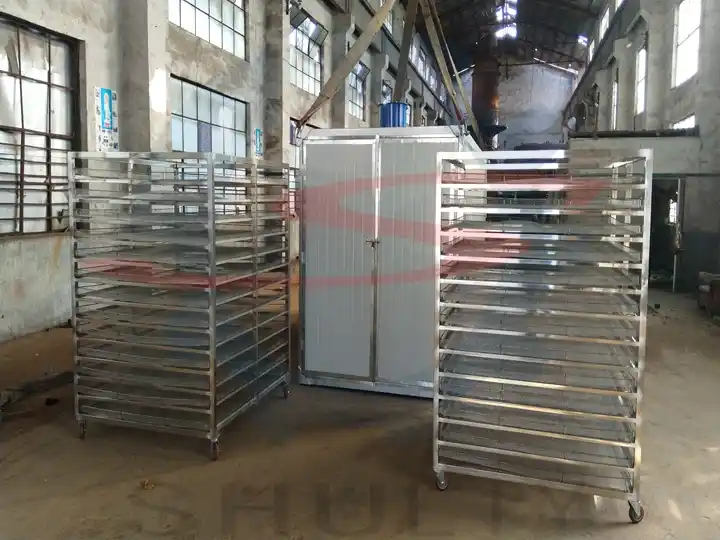

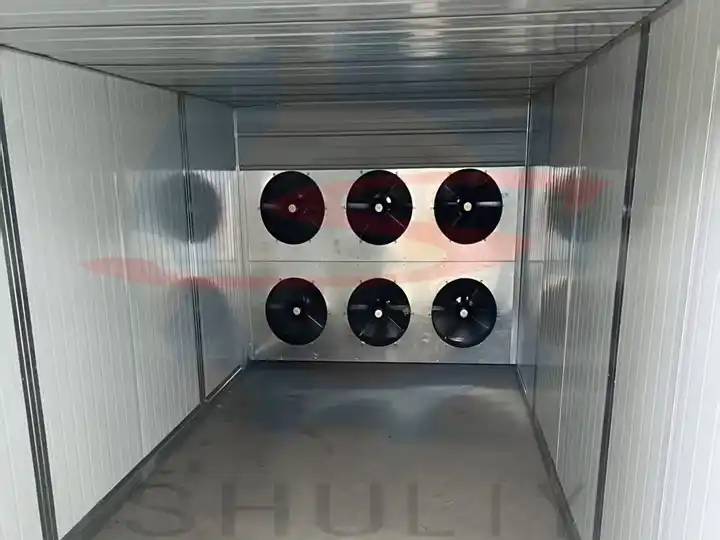
How Does an Egg Tray Dryer Work?
The drying room uses circulating hot air to dry wet egg trays quickly and evenly. The process includes the following steps:
Loading the Wet Egg Trays
The freshly molded wet trays are placed on stainless-steel or plastic drying trays.
Workers push the loaded trolleys into the drying room, keeping proper spacing between trays to ensure good airflow.
Heating and Hot-Air Circulation
After the door is closed, the heat source warms the air (normally 80–120°C).
Powerful circulation fans deliver hot air to every corner of the chamber for even drying.
Moisture Evaporation and Exhaust
The hot air blows across the tray surfaces and evaporates the moisture.
The humid air is discharged through the exhaust outlets, while fresh air enters to maintain the “air supply–heating–moisture removal” cycle.
Drying Completion
The drying process usually takes 20–30 minutes, depending on capacity, tray thickness, and temperature.
Once the trays reach the required dryness, the trolley is removed and sent to packaging or hot-press shaping.
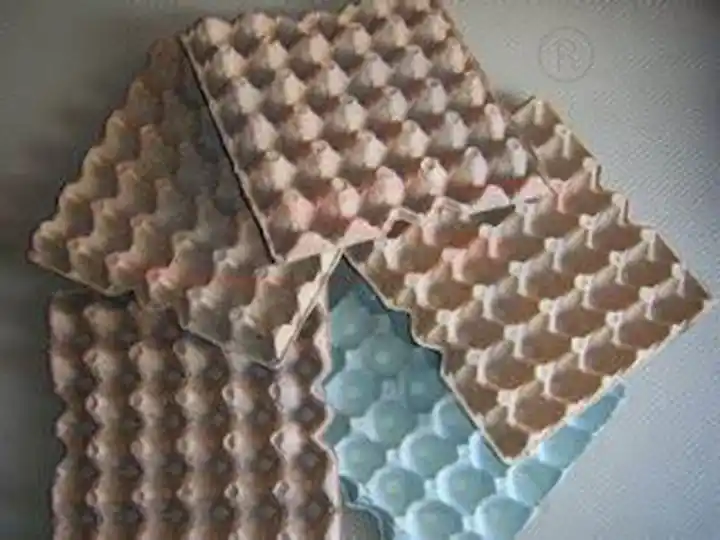
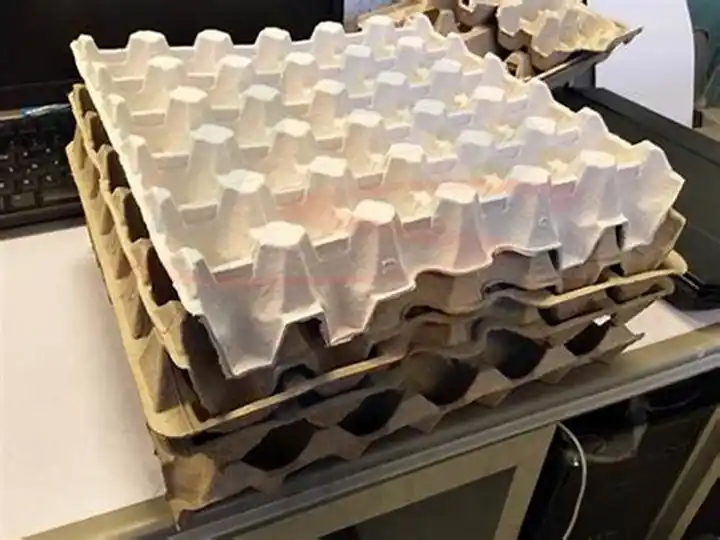

Technical Parameters (Reference)
| モデル | Dimensions(mm) | Drying crews | Quantity of drying material (times/kg) |
| SL-2 | 4000*1860*2500 | 2 | 300-600 |
| SL-4 | 6000*1860*2500 | 4 | 500-1000 |
| SL-6 | 7200*2300*2500 | 6 | 800-1500 |
| SL-8 | 8500*2300*2500 | 8 | 1000-2000 |
| SL-10 | 10000*2300*2500 | 10 | 1200-2500 |
| SL-12 | 8500*3300*2500 | 12 | 2500-4000 |
| SL-18 | 8500*5000*2500 | 18 | 4000-6500 |
| SL-24 | 12000*5000*2500 | 24 | 5000-8000 |
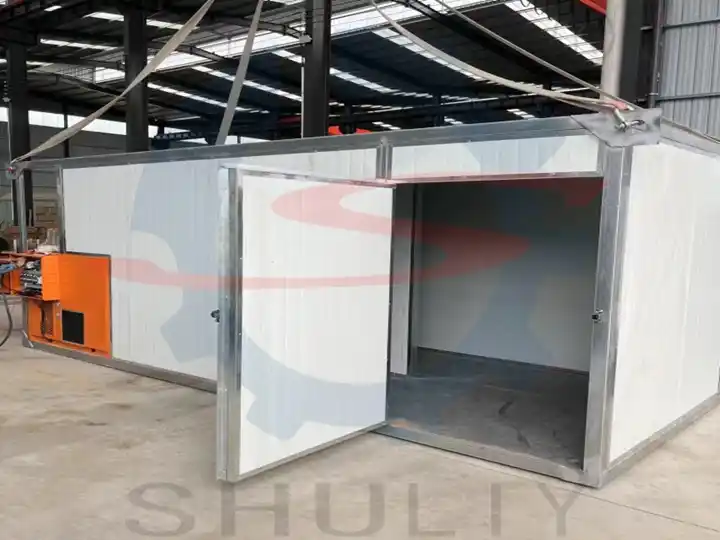
Advantages of Using an Egg Tray Drying Room
1. High Efficiency, Weather-Independent
Unlike sun drying, which is affected by weather, the drying room can run continuously, greatly increasing production capacity.
2. Even Drying, Stable Product Quality
Hot-air circulation ensures every tray is dried evenly, reducing the risk of deformation or cracking.
3. Flexible Heat Sources
Choose the energy type based on local prices: natural gas, diesel, coal, electric, or heat pump.
4. Large Capacity, Easy Expansion
Drying capacity can be increased simply by extending the room length. Upgrades are convenient and cost-effective.
5. Lower Investment than Metal Continuous Drying Lines
Compared to automatic chain-type metal dryers, the drying room has a simpler structure, lower cost, and is ideal for factories with limited budgets.
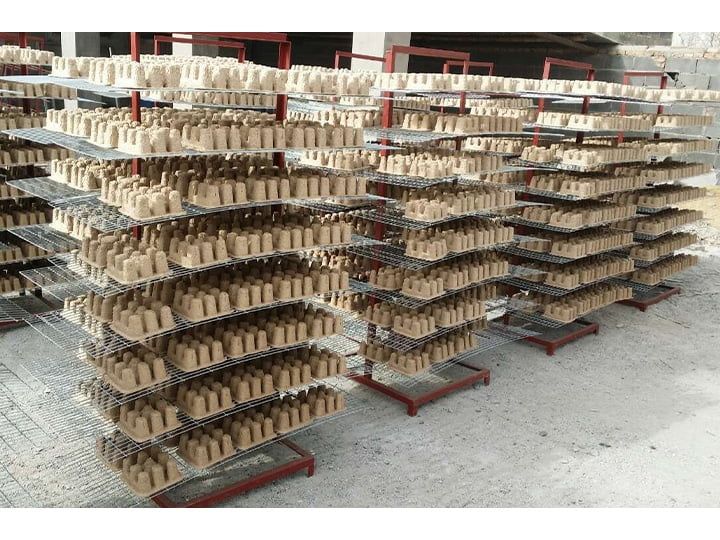
How to Operate an Egg Tray Drying Room Correctly?
To achieve the best drying results, follow these guidelines:
- Keep Consistent Tray Spacing: Ensure uniform gaps between trays for proper airflow.
- Avoid Overloading: Do not stack too many trays at once.
- Preheat the Drying Room: Warm up the chamber before loading trays.
- Maintain Stable Temperature and Airflow: Keep heat and fan settings consistent during operation.
- Clean Fans and Air Ducts Regularly: Prevent dust buildup to ensure efficient drying.
- Adjust Exhaust Based on Humidity: Open or close vents according to moisture levels.
- Always operate the drying room according to the official manual.
Why Choose Shuliy’s 卵トレイ乾燥機?
Shuliy has over 20 years of experience in pulp molding equipment and offers a variety of egg tray drying solutions. We can customize based on production capacity, factory layout, and fuel type.
Our Advantages:
- Highly insulated drying room structure, saving energy and materials
- Optimized air circulation for more even drying
- Finished trays are less likely to deform or crack
- Core components come with a one-year warranty
- CE, ISO9001, and other industry certifications
- Proven experience with projects exported to over 60 countries
Whether for small factories or large production lines, Shuliy can provide efficient, stable, and cost-effective drying solutions tailored to each customer.



